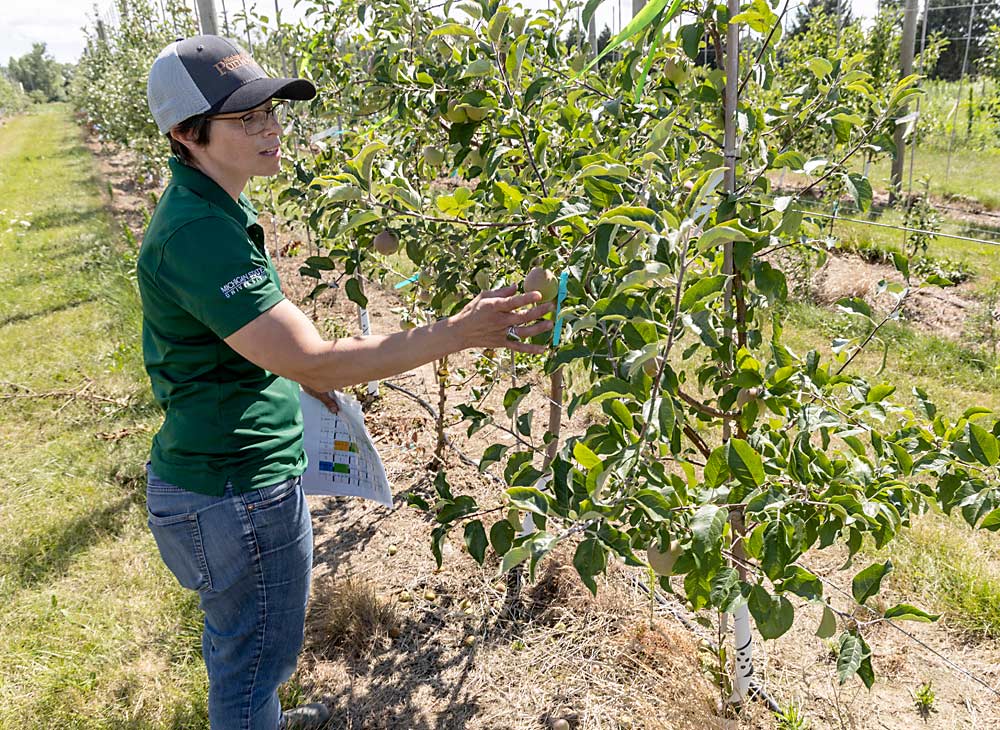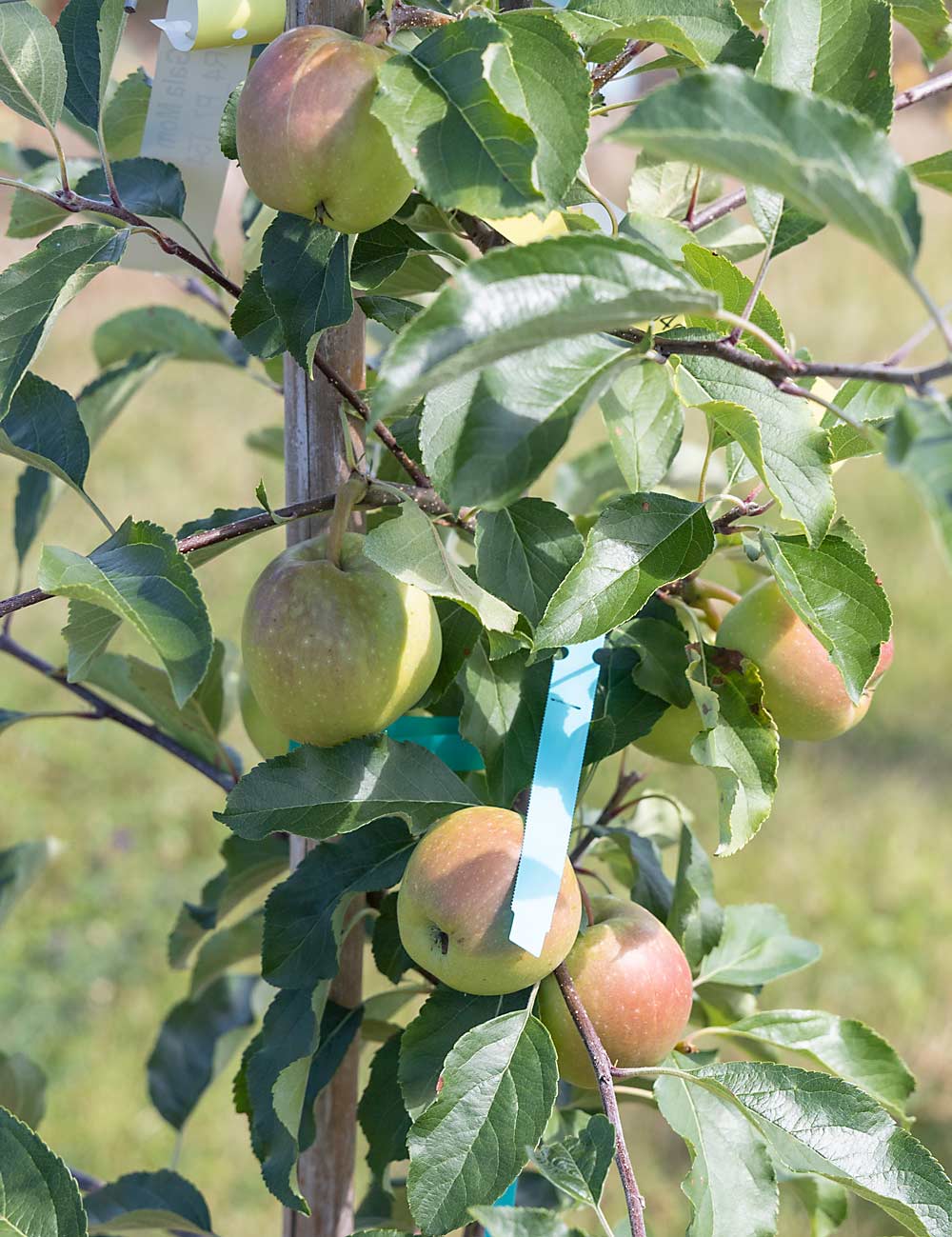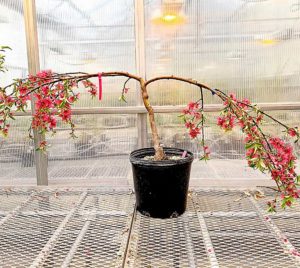
Every once in a while, an apple variety will randomly mutate and create a new sport. A sport shares most of the traits of the original variety, but not quite all of them. If a sport’s new trait happens to be redder skin or an earlier or later ripening period, it can be economically advantageous for growers.
But what caused the apple to change? What genetic or developmental process led to Autumn Gala, for example, a late-ripening sport that appeared on a standard Gala tree’s branch at Catoctin Mountain Orchard in Maryland? And can the biological mechanisms behind such a change be exploited?
“If we can understand the basic knowledge, maybe we can find more ways to manipulate ripening during harvest time, and spread out the window,” said Courtney Hollender, a molecular fruit tree physiologist at Michigan State University.
Hollender and MSU postharvest physiologist Randy Beaudry are leading a new research project studying the possible genetic or developmental differences that lead to later or earlier ripening. The project is funded by the Michigan Apple Committee and MSU’s Project GREEEN, Hollender said.
Beaudry said the project’s ramifications are “pretty large.”
“If we learn how the plant itself regulates its developmental rate, we could exploit that in the years to come,” he said.
In other words, instead of waiting for a sport to develop randomly, breeders could intentionally develop their own early- or late-maturing cultivars, Beaudry said.
The MSU researchers are studying three pairs of apples: Gala and Autumn Gala; Cripps Pink/Pink Lady and its early ripening sport, Pink Lady Maslin; and standard-ripening Aztec Fuji and the early ripening sport September Wonder Fuji. The paired apple trees are in a block at MSU’s Clarksville Research Center. The block, a randomized planting of unusual, obscure and standard apple varieties, was planted in 2019 for use in multiple projects, Hollender said.
Hollender started studying the fruit development rates for each of the apple pairs this year, she said.

She also plans to look for genetic clues in the Gala pairing by sequencing the genomes of the original Autumn Gala sport and its parent (standard) Gala tree. Using tissue from the original sport and parent tree will ensure fewer genetic differences or background mutations that aren’t associated with the late-maturing trait they’re trying to pinpoint, she said.
“This reduces the noise for this type of mapping-by-sequencing technique, making it more likely that we’ll be able to identify a candidate gene or mutation that could have caused the late maturation trait,” she said. “Once we get to the gene level, we’ll have a lot more insight into the molecular mechanisms regulating fruit maturity.”
A single change in a regulating gene can lead to dozens of other changes, some of which might not be good for storage and other human uses, Beaudry said.
Hollender also is tracking traits associated with fruit maturity and ripening, including changes in starch content, internal ethylene content and fruit respiration rates over time. She’s also evaluating whether differences in net photosynthesis at different points during the growing season could be associated with differences in maturation time, she said.
by Matt Milkovich







Leave A Comment